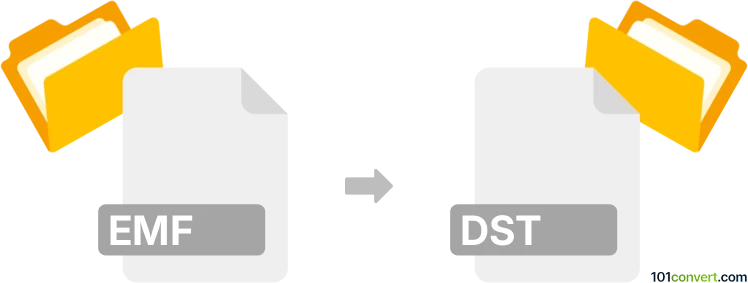Convert EMF to DST
How to convert EMF vector graphics to DST embroidery files using top digitizing software.

How to convert emf to dst file
- Other formats
- No ratings yet.
101convert.com assistant bot
6h
Understanding EMF and DST file formats
EMF (Enhanced Metafile) is a vector graphics file format developed by Microsoft. It is commonly used for storing images, diagrams, and illustrations in a scalable format, making it ideal for use in Windows applications and for transferring graphics between programs.
DST (Tajima Embroidery Format) is a proprietary file format used by embroidery machines, particularly those manufactured by Tajima. DST files contain stitch commands and machine instructions, allowing embroidery machines to reproduce intricate designs on fabric.
Why convert EMF to DST?
Converting an EMF file to DST is essential when you want to turn a digital vector graphic into an embroidery pattern. This process is commonly used in the textile and fashion industries to automate the embroidery of logos, artwork, or custom designs onto garments and accessories.
How to convert EMF to DST
Direct conversion from EMF to DST is not straightforward, as DST files require stitch data rather than vector paths. The process typically involves two main steps:
- Import the EMF file into embroidery digitizing software.
- Digitize the design by assigning stitch types, directions, and densities, then export as DST.
Recommended software for EMF to DST conversion
The best way to convert EMF to DST is by using professional embroidery digitizing software. Here are some top choices:
- Wilcom Embroidery Studio: Import your EMF file, use the Auto-Digitize or Manual Digitize tools, then export via File → Export → Tajima DST.
- Embird: Open your EMF file, digitize the design, and save as DST using File → Save As → DST.
- Ink/Stitch (Inkscape extension): Import EMF into Inkscape, use Ink/Stitch to digitize, then export with Extensions → Ink/Stitch → Embroider.
Note: Automatic digitizing may not always yield perfect results. Manual adjustment of stitch paths and settings is often necessary for optimal embroidery quality.
Tips for successful conversion
- Clean up your EMF artwork before importing to reduce unnecessary nodes and colors.
- Choose appropriate stitch types (satin, fill, run) for different design elements.
- Test the DST file on your embroidery machine before mass production.
Note: This emf to dst conversion record is incomplete, must be verified, and may contain inaccuracies. Please vote below whether you found this information helpful or not.